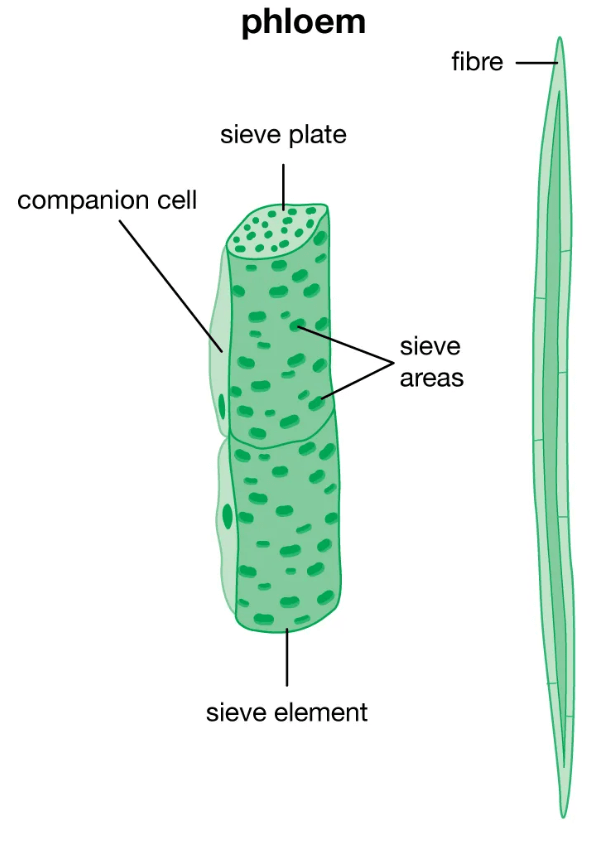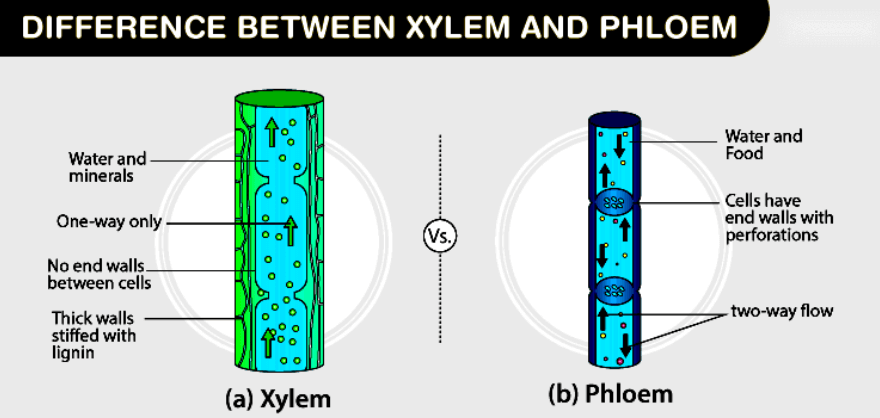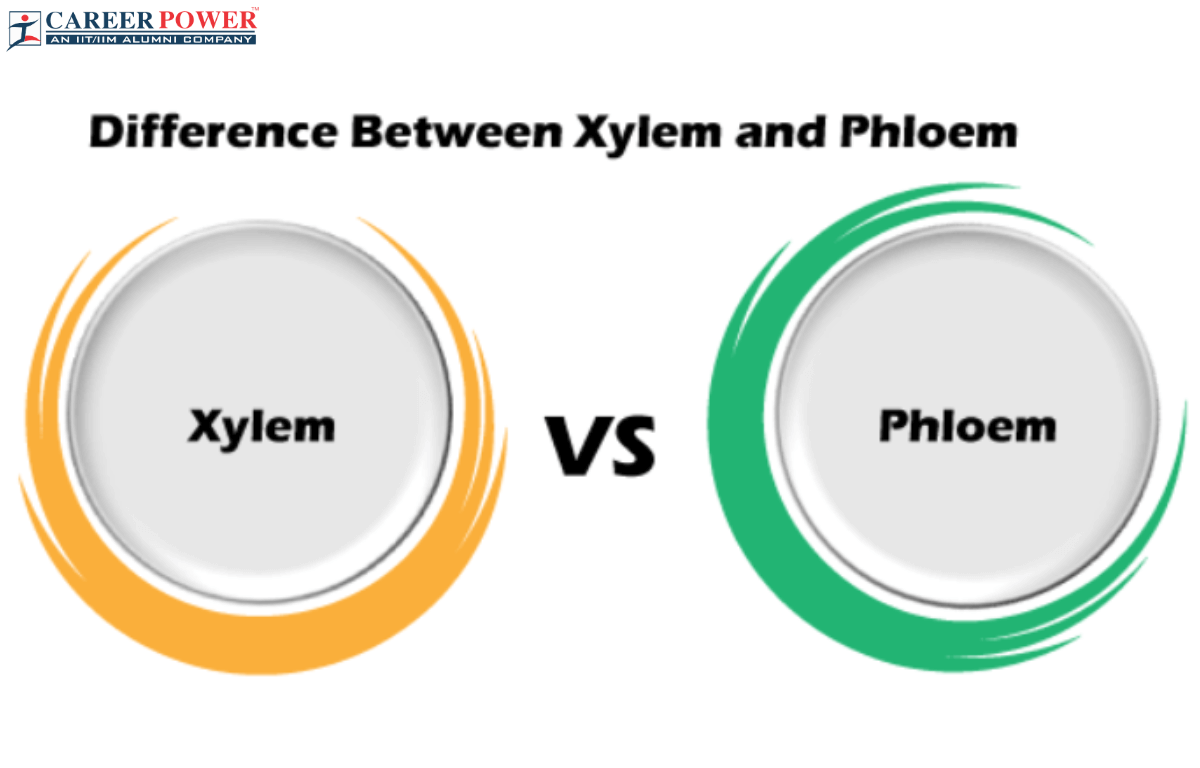The xylem and phloem are two types of vascular tissues in plants that play essential roles in the transport of water, nutrients, and other substances throughout the plant. Together xylem and phloem make up the plant’s vascular system, allowing it to distribute water, nutrients, and sugars efficiently, supporting growth and metabolic processes. The xylem and phloem are two important topics in biology.
What are Xylem and Phloem?
Xylem:
- The xylem is responsible for the transport of water and minerals from the roots to the rest of the plant, including leaves.
- It consists of specialized cells such as tracheids and vessel elements that are dead at maturity and form a network of interconnected tubes.
- Xylem cells have thick cell walls, which provide structural support and help in the transport of water under tension.

Phloem:
- On the other hand, Phloem is responsible for the transport of nutrients, primarily sugars produced during photosynthesis, from the leaves to the other parts of the plant, including leaves.
- It consists of specialized cells called sieve tube elements and companion cells, which are living cells.
- Phloem cells are connected end-to-end to form a continuous tube, and they transport sugar through a process called translocation.

Difference Between Xylem and Phloem
Xylem and Phloem are two types of vascular tissues in plants. The xylem transports water and minerals unidirectionally from roots to shoots and provides support, while the phloem transports organic nutrients bidirectionally throughout the plant. These two vascular tissues work in coordination to maintain the plant’s growth and metabolism.

| Difference Between Xylem and Phloem | ||
| Characteristics | Xylem | Phloem |
| Function | Xylem transports water and minerals upwards; and provides structural support to the plant. | Phloem transports organic nutrients bidirectionally. |
| Direction of Flow | The xylem flows water and minerals in the upward direction (roots to shoots). | The phloem flows nutrients bidirectionally (up and down). |
| Components | It includes Tracheids and vessel elements (dead cells). | It includes Sieve tube elements, and companion cells (living cells). |
| Transport efficiency | The xylem has high transport efficiency. | Transport efficiency can vary depending on plant species and conditions. |
| Location | Located in the central part of the stem, branches, and roots. | It is found primarily near the periphery of the stem, branches, and leaves. |
| Cell type | The xylem only contains non-living cells. | Phloem contains various cell types, including living sieve tube elements. |
| Control | Mainly controlled by transpiration pull. | It can be controlled by various hormonal signals. |
| Response to Damage | Defense against pathogens through the formation of tyloses and gum. | Stress is involved in responses to stress, such as wound healing. |
Advantages of Xylem and Phloem
The xylem and phloem are essential plant tissues that have distinct functions in the transport of water, nutrients, and sugars. The xylem and phloem are complementary tissues that enable plants to thrive by transporting essential substances and providing structural support.
Advantages of Xylem
- Water Transport: Xylem efficiently transports water and dissolved minerals from the roots to the plant, ensuring its hydration and providing nutrients to all parts.
- Structural Support: Xylem cells, particularly the dignified tracheids and vessel elements, contribute to the plant’s structural support, aiding in the growth of tall trees.
- Longevity: Xylem cells are durable and can last for years, enhancing the plant’s longevity.
Advantages of Phloem
- Nutrient Transport: Ploem facilitates the movement of sugars and other organic compounds produced in photosynthesis from the leaves (source) to other parts of the plant, such as roots, fruits, and flowers (sinks).
- Energy Efficiency: Phloem transport relies on pressure-driven mechanisms called translocation, which is highly energy-efficient as it doesn’t require active energy expenditure by the plant.
- Seasonal Adaptation: Phloem can be adapted to transport different types of nutrients based on the plant’s seasonal needs, ensuring efficient resource allocation.



 50 Vegetables Name for Kids in English a...
50 Vegetables Name for Kids in English a...
 Food Chain: Definition, Types, Examples,...
Food Chain: Definition, Types, Examples,...
 Human Respiratory System: Definition, Di...
Human Respiratory System: Definition, Di...













